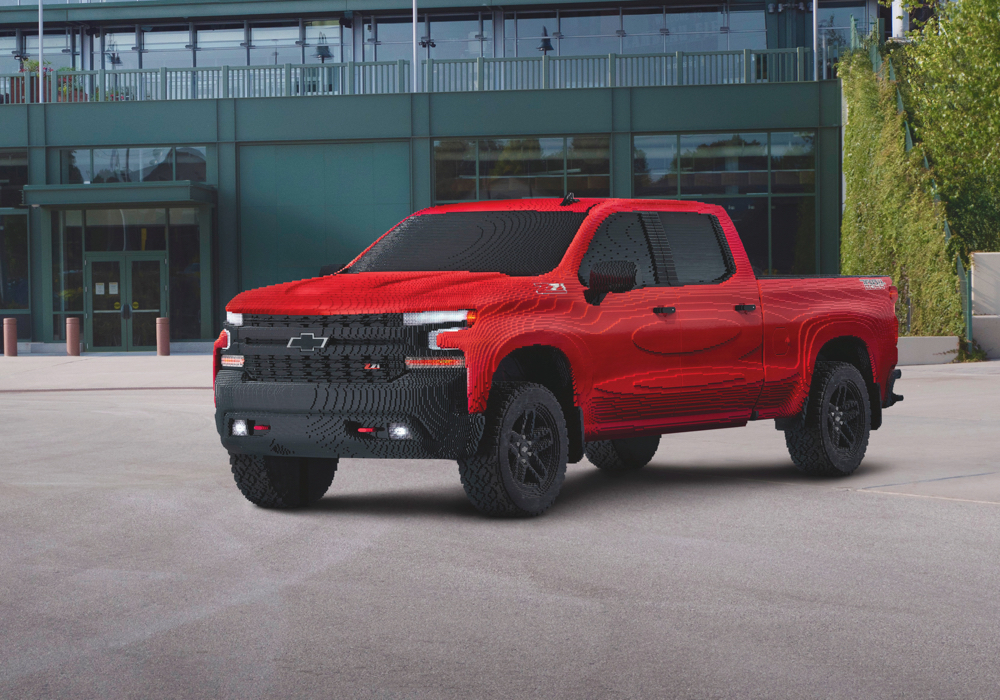One of the most interesting press releases to drop into my inbox this year has come from General Motors. “Chevrolet debuts all-new Silverado marketing campaign,” was the headline. It revealed how The General (as car guys have called the brand for years) plans to convince consumers to take a second look at the updated pickups and heavy-duty models it has introduced.
“In today’s hyper-connected, always-on society, we knew the all-new Silverado launch campaign needed to be bold, engaging and comprehensive to break through the clutter while staying true to the brand’s values and overall advertising approach,” said Paul Edwards, U.S. vice-president of Chevrolet marketing in that release. “Leveraging all the available channels — traditional and new — along with unique partnerships and integrations allows us to reach both traditional truck buyers and potential new customers.”
One of those unique and new integrations seems to be bringing Detroit and Hollywood a bit closer together, as the Silverado plays a central role in “The LEGO Movie 2: The Second Part.”
Of course, it could also be argued GM has been down this road before, with its Camaro debuting as a central character in the “Transformers” movie of a few years ago.

“I don’t think it’s new,” says JoAndrea (Joey) Hoegg, of the Hollywood angle. She’s associate professor and chair, marketing and behavioural research, at the Sauder School of Business at the University of British Columbia. Country Guide spoke with her about GM’s multifaceted marketing approach and whether or not it’s part of an emerging trend that manufacturers are increasingly turning to, moving away from the more traditional advertising methods we’ve all become used to.
While the basic approach may not be entirely new, she thinks GM has amplified some established practices with the new Silverado marketing plan, as it focuses on getting the truck in front of consumers in a way that isn’t a straightforward ad.
Read Also

The big squeeze: How to be fair to siblings during farm succession
Managing sibling business relationships on family farms.
“There are some twists on what has been pretty standard,” she says. “That trend in classic advertising, we’re shifting away from. People are watching less standard television, so they’re being exposed to less advertising. They have pop-up blockers on their internet, so they’re not seeing ads that way. So just getting us in front of ads we’ll sit and watch for the full 30 seconds, that’s gotten lower. Firms are having to do slightly different things. We don’t spend a lot of time watching commercials other than during the Super Bowl. Back in the ’70s and ’80s we weren’t able to get away from the television.”
GM also used that press release to reveal that three all-new TV, digital and cinema films would air in the first half of 2019. They’re used to promote the Silverado. As well, the truck had a central role on one episode of the “Jimmy Kimmel Live” television show.

“One of the things they do is create these ads that are longer, kind of like storytelling and hope they will go viral on the internet,” says Hoegg. “But that’s not always easy, because there are so many things on the internet and so few of them actually go viral. So they look for ways to get in front of them (potential customers) in other ways they are watching, things like Jimmy Kimmel or movies, which is another popular way to do it. It’s not new, it’s been done for a long time, but it’s probably on the increase in how much it’s done or how blatantly it’s done, where the product is quite central rather than it just happens to be in the background.”
As GM heavily promoted the truck’s upcoming role in “The Lego Movie 2: The Second Part,” in January the brand even co-ordinated with students at two U.S. schools to build a full-sized Silverado out of LEGO blocks as a publicity effort.
“The basic reason for all this is called ‘affects transfer,’” explains Hoegg. “If you have positive associations — if you’re watching Jimmy Kimmel and it gives you a positive experience watching him or you’re watching the LEGO movie and laughing, having a positive experience — then those positive feelings will transfer over to the vehicle or whatever product it happens to be. It’s quite powerful.”
The fact that “The LEGO Movie 2” is a kind of feel-good flick suggests marketers identified it as a good one to syphon off some positive feelings from it and transfer them to its Silverado.
“Some interesting evidence that companies really do believe in affects transfer is they tend to almost never put products in horror movies, because that feeling is negative,” she adds.
But the most famous vehicle marketer of them all, Henry Ford, was credited with saying there’s no such thing as bad publicity, only publicity. Was he wrong? If so, it would be hard for any advertising campaign to go amiss.
“I have some research that suggests he may actually be right, although firms stay away from it because they believe in this notion of affect transfer,” Hoegg says. “But there is some suggestion that fear can be a good thing. You can imagine if you’re afraid watching a horror movie you grab the person next to you and sort of connect to that person. There is some argument that that can work for products too. If you’re holding your Coke while watching that movie, you might actually become more connected to it. So he might be right.
“But brands think there is a possibility that the negative feelings could transfer over. It’s the same with sad movies. It might be even stronger if you’re depressed watching a movie.”

There are other emotional factors at play in these marketing strategies as well, far from the overt claims of product superiority in a typical ad.
“The other psychological construct that happens is called mere exposure,” she continues. “That’s just getting in front of you. If you see something over and over, you become familiar with it. And that familiarity has a positive feeling. Our brains think if we’re familiar with it, we like it better. That’s why at a hockey game you see all those brand (names) along the boards. We’re not even paying attention to them. But they’re there and just kind of casually getting into our brain. And maybe later when we’re trying to decide on a company, we might be reminded of that brand.”
Certainly GM isn’t the only vehicle brand to try and associate its products with a feel-good movie. In a TV commercial that first aired during the Super Bowl, Ford made a somewhat less overt effort at it. Its commercial showed a group of Ford pickups, some old and some new, pulling loaded trailers down a picturesque highway while Jerry Reed’s classic song “Eastbound and Down” from the movie “Smokey and the Bandit” played.
“It’s not the only thing,” says Hoegg. “There are other more conscious things, like you might see the vehicle and think, ‘Oh, that’s nice,’ or you’ll recognize the brand.”
One of those other methods chosen by The General to get a Silverado image in front of people is its partnership with Amazon. A picture of a Silverado breaking out of the side of the box will appear on all of Amazon’s product delivery boxes soon to arrive on the doorsteps of millions of its customers.
“I don’t think we’ll ever get rid of regular advertising,” Hoegg says, summing things up. “There are just too many opportunities to get in front of people. I think there will be longer ads. The notion of a longer television ad I think will eventually fade out and it will move to this model where we learn about products seeing them in actual use in movies, on television, with YouTubers talking about them, which is happening like crazy already. I think that will be the shift.”
















